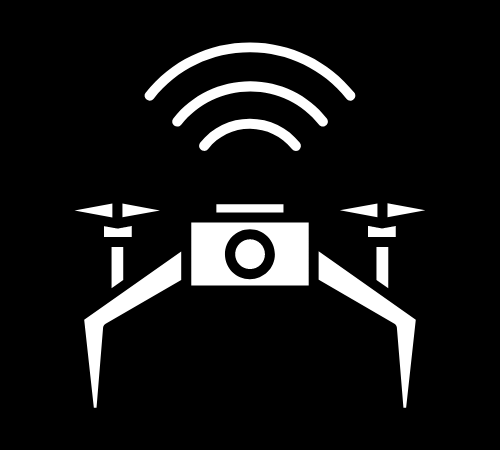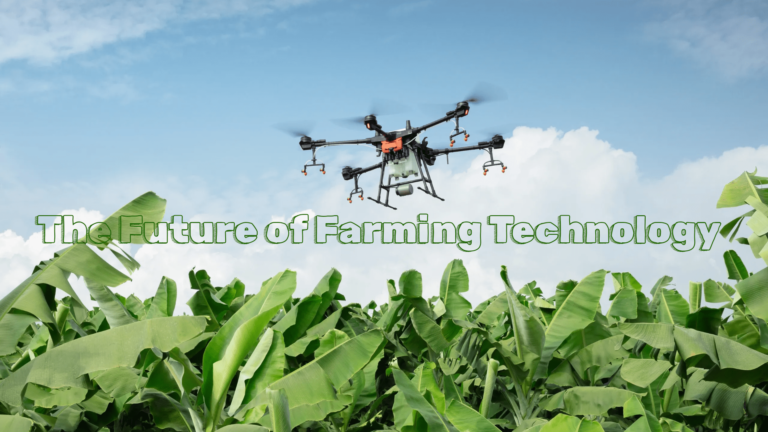Drone technology has rapidly evolved over the past decade, becoming an essential tool in various industries, from agriculture to filmmaking, and even military operations. With so many different types of drones available, it can be overwhelming to choose the right one for your needs. In this comprehensive guide, we’ll explore the various types of drones, their advantages, disadvantages, and typical uses to help you make an informed decision.
What Are the Different Types of Drones?
Drones, also known as unmanned aerial vehicles (UAVs) or unmanned aerial systems (UAS), come in a wide range of sizes and capabilities. From tiny nano drones used for indoor inspections to large fixed-wing drones capable of surveying vast areas, each type serves a unique purpose. Understanding the different categories of drones can help you select the right one for your specific application.
Here’s a detailed table summarizing all types of drones used in the USA, including their characteristics, advantages, disadvantages, common uses, and price range:
| Drone Type | Description | Advantages | Disadvantages | Common Uses | Price Range (USD) |
|---|---|---|---|---|---|
| Single-Rotor Drones | Resemble traditional helicopters, with a single large rotor and a tail rotor for stability. | – Capable of carrying heavy payloads – Long flight endurance – High efficiency | – Complex operation – Higher maintenance – Less stable and more dangerous in bad landings | – Aerial LIDAR scanning – Agricultural spraying | $25,000 – $300,000 |
| Multi-Rotor Drones | Most common type with multiple rotors (tricopters, quadcopters, hexacopters, etc.); quadcopters are the most popular. | – Easy to operate – Highly maneuverable – Good for precise control and close-range operations | – Limited flight time and range – Lower speed and payload capacity | – Aerial photography – Inspections – Drone delivery | $500 – $60,000 |
| Fixed-Wing Drones | Resemble airplanes, with a rigid wing that provides lift. They do not need energy to stay airborne and are more energy-efficient than rotor-based drones. | – Long endurance – Capable of covering large areas – Efficient for long-distance flights | – Require runways for takeoff and landing – Not suitable for hovering or low-speed tasks | – Mapping – Surveillance – Environmental monitoring | $20,000 – $150,000 |
| Fixed-Wing Hybrid VTOL | Combines the features of fixed-wing and multi-rotor drones; can take off and land vertically and transition to efficient forward flight. | – Versatile with both vertical takeoff and efficient forward flight – Long endurance | – Expensive – Complex technology – Not suitable for beginners | – Drone delivery – Search and rescue – Military applications | $100,000 – $200,000 |
| Nano/Micro Drones | Extremely small drones, sometimes the size of an insect; used for specialized tasks that require minimal space or discreet operation. | – Extremely small and portable – Can operate in confined spaces – Low cost | – Limited battery life – Minimal payload capacity – Vulnerable to environmental factors | – Indoor inspections – Surveillance – Research | $20 – $1,000 |
| Tethered Drones | Drones connected to a power source via a tether, allowing for continuous operation without battery limitations. | – Continuous operation without battery drain – Stable and secure position | – Limited range and mobility – Tether can be restrictive | – Surveillance – Communication relay stations | $10,000 – $150,000 |
| Racing Drones | Lightweight, agile drones designed for high-speed racing; typically built for performance rather than endurance. | – High speed and agility – Customizable and upgradable – Exciting and engaging | – Short flight times – Less stable at high speeds – Requires skill to operate | – Drone racing – Aerial acrobatics | $300 – $2,000 |
| Underwater Drones (ROVs) | Remotely operated vehicles designed for underwater exploration and inspection; equipped with cameras and sensors. | – Capable of deep-sea exploration – Equipped with specialized sensors – Highly durable | – Expensive – Limited to underwater environments – Slow movement | – Marine research – Underwater inspections – Aquaculture | $5,000 – $100,000 |
Now, We go through All types of Drones in more detail
1. Single-Rotor Drones: Advantages, Disadvantages, and Uses
Single-rotor drones are designed to resemble traditional helicopters, featuring one large rotor for lift and a tail rotor for stability and direction. These drones are known for their ability to carry heavy payloads and have long flight endurance, making them ideal for specialized tasks such as aerial LIDAR scanning and agricultural spraying.
Advantages:
- Heavy Payload Capacity: Can carry significant weight, useful for specialized equipment like LIDAR.
- Long Endurance: Capable of longer flight times compared to multi-rotor drones.
- Energy Efficiency: The single large rotor is more aerodynamically efficient.
Disadvantages:
- Complex Operation: Requires more skill to operate and maintain.
- Higher Risk: Less stable, especially during bad landings.
- Expensive: Generally costlier due to advanced technology and maintenance needs.
Common Uses:
- Aerial LIDAR scanning
- Agricultural spraying
- Long-duration surveillance
2. Multi-Rotor Drones: Versatile and Accessible UAVs
Multi-rotor drones are the most popular type of UAV, especially among hobbyists and commercial users. These drones have multiple rotors, which make them highly maneuverable and easy to control, even in tight spaces. Quadcopters, with their four rotors, are the most commonly used in this category.
Advantages:
- Easy to Operate: User-friendly controls make them accessible to beginners.
- Highly Maneuverable: Can hover, ascend, descend, and rotate with precision.
- Cost-Effective: Available at various price points, making them accessible to a broad audience.
Disadvantages:
- Limited Flight Time: Shorter battery life limits flight duration.
- Lower Speed and Payload Capacity: Not suitable for heavy lifting or long-distance tasks.
Common Uses:
- Aerial photography and videography
- Building and structure inspections
- Drone delivery services
3. Fixed-Wing Drones: Long-Range Aerial Powerhouses
Fixed-wing drones are designed like traditional airplanes, with a rigid wing that provides lift. Unlike multi-rotor drones, they do not need energy to stay airborne, making them more efficient for covering large areas. These drones are ideal for tasks that require long flight durations and extensive area coverage.
Advantages:
- Long Endurance: Can stay airborne for several hours, ideal for long-distance missions.
- Energy Efficient: Uses energy primarily for forward motion, not for staying aloft.
- Covers Large Areas: Perfect for mapping, surveying, and monitoring large regions.
Disadvantages:
- Requires Runway: Needs space for takeoff and landing, limiting operational environments.
- No Hover Capability: Cannot stay in one place, limiting their use in certain applications.
- Higher Cost and Skill Requirement: Generally more expensive and require specialized training.
Common Uses:
- Aerial mapping and surveying
- Pipeline and infrastructure inspections
- Environmental monitoring
4. Fixed-Wing Hybrid VTOL Drones: Best of Both Worlds
Fixed-wing hybrid VTOL (Vertical Take-Off and Landing) drones combine the features of fixed-wing and multi-rotor drones. They can take off and land vertically like a multi-rotor drone but switch to efficient forward flight like a fixed-wing drone. This versatility makes them suitable for a range of applications, especially in challenging environments.
Advantages:
- Versatile: Combines vertical takeoff with long-range flight capabilities.
- Long Endurance: Efficient for both short and long-duration missions.
- Flexible Use Cases: Suitable for varied environments and applications.
Disadvantages:
- Expensive: Advanced technology comes at a higher cost.
- Complex to Operate: Requires more experience and training to use effectively.
- Not Ideal for Beginners: Better suited for professional or commercial use.
Common Uses:
- Drone delivery services
- Search and rescue missions
- Military applications
5. Nano and Micro Drones: Small Size, Big Impact
Nano and micro drones are among the smallest types of UAVs, often no bigger than a smartphone. These tiny drones are designed for specialized tasks that require operating in confined spaces or discreet environments. Despite their size, they are packed with technology that allows for precise control and data collection.
Advantages:
- Extremely Small: Can operate in tight or indoor spaces.
- Low Cost: Generally more affordable compared to larger drones.
- Discreet: Can be used for surveillance without drawing attention.
Disadvantages:
- Limited Battery Life: Small size restricts battery capacity.
- Minimal Payload Capacity: Can carry only lightweight equipment.
- Vulnerable to Environmental Factors: Sensitive to wind and weather conditions.
Common Uses:
- Indoor inspections and repairs
- Surveillance and security monitoring
- Research and development
6. Tethered Drones: Unlimited Flight Time
Tethered drones are connected to a power source via a tether, allowing them to stay airborne for extended periods without worrying about battery life. These drones are particularly useful for applications that require constant surveillance or communication relay.
Advantages:
- Unlimited Flight Time: Can remain in the air for as long as needed.
- Stable Operation: The tether provides stability, reducing the risk of drift.
- Secure Data Transmission: The tether allows for secure and constant data transfer.
Disadvantages:
- Limited Range: The tether restricts the drone’s mobility and operational range.
- Tether Can Be Restrictive: The physical tether can get in the way or be cut accidentally.
Common Uses:
- Persistent surveillance and monitoring
- Communication relay stations
- Public safety and event security
7. Racing Drones: Speed and Agility in the Skies
Racing drones are built for speed, agility, and performance. These lightweight drones are used in drone racing competitions, where pilots navigate through complex courses at high speeds. Racing drones are customizable and often built from scratch by enthusiasts.
Advantages:
- High Speed: Capable of reaching very high speeds for thrilling races.
- Agility: Designed for quick maneuvers and tight turns.
- Customizable: Can be modified and upgraded for better performance.
Disadvantages:
- Short Flight Times: High performance leads to quicker battery drain.
- Less Stable: Speed can make them harder to control, especially for beginners.
- Requires Skill: Not suitable for novice pilots; requires significant practice.
Common Uses:
- Drone racing competitions
- Aerial acrobatics
- High-speed obstacle courses
8. Underwater Drones: Exploring the Depths with ROVs
Underwater drones, also known as remotely operated vehicles (ROVs), are designed to operate underwater, equipped with cameras, sensors, and tools for marine exploration. These drones are used for various underwater tasks, from research to infrastructure inspection.
Advantages:
- Capable of Deep-Sea Exploration: Can reach depths that are inaccessible to humans.
- Equipped with Specialized Sensors: Designed for specific underwater tasks.
- Highly Durable: Built to withstand high pressure and harsh underwater environments.
Disadvantages:
- Expensive: Advanced technology and materials increase the cost.
- Limited to Underwater Environments: Cannot operate outside of water.
- Slow Movement: Generally slower than aerial drones due to water resistance.
Common Uses:
- Marine research and exploration
- Underwater infrastructure inspections
- Aquaculture and fish farming
This comprehensive guide provides detailed insights into the various types of drones, their advantages, disadvantages, and common uses, helping you choose the right UAV for your needs. Whether you’re a hobbyist, professional, or business looking to leverage drone technology, understanding these categories will guide you to the perfect drone.
How Drones Are Revolutionizing Agriculture in the U.S. | The Future of Farming Technology



